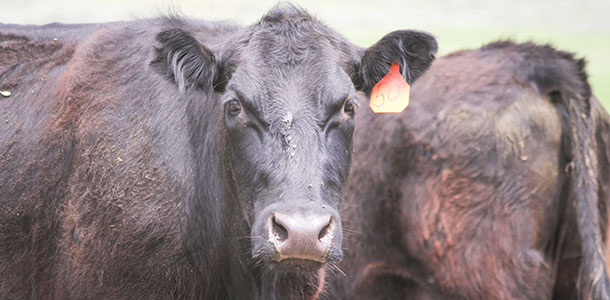Pest management chemicals, A.I., embryo transfer, EPDs and other genomic technologies are constantly improving and changing the industry. Even though technology has helped control parasitic problems, selecting for resistant traits and improving management practices could be a long-term solution to the problem.
So why are chemicals being used today? Were cattle previously resistant to parasites? How can an operation develop genetic resistance? What else can be done besides the use of chemicals?
Jared Decker, an assistant professor of animal science at the University of Missouri, addresses these questions and explains his perception of why producers use chemicals today and how they can use genetics to breed for a resistance to parasites.
“There was a need for these chemicals,” Decker says. “Parasites have an economic impact on the industry. More importantly, as the world population grows and agriculture is asked to produce more food with fewer resources, I think it’s important we continue to adopt new technologies that can improve the production of our livestock.”
Though chemical control for parasites has offered a solution to the problem, research has suggested certain breeds can offer a systematic approach. It has been found that Brahman and other Zebu breeds, breeds with a hump, have shown greater resistance to parasites than other breeds.
Due to their genetic nature, these breeds can be crossed with other breeds to create a resistance to parasites.
Research conducted in Australia found that selecting for parasite resistance does improve animals’ overall resistance, Decker says. However, the typical EPD approach of collecting trait measurements, phenotypes on animals, probably wouldn’t be that effective because of the difficulty in consistently and accurately measuring the parasite load for herds across the U.S.
Cross-breeding for parasite resistance
Cross-breeding is one strategy that could be implemented in an operation quite rapidly, Decker says. In that cross-breeding system, breeds such as Brahman that have been shown to have more genetic resistance to parasites can be introduced to the herd.
The other approach would be to start collecting information and data on the cows that have more parasites and the cows that have fewer parasites.
A strategy could be created where, at a set date, the producer measures the number of parasites on a specific cow and records that data over time. Based on those records, breeding decisions could be made for parasite resistance.
“While cattle prices are high, we need to evaluate what new approaches and what new technologies we can use and implement now and reap the benefits of these high cattle prices,” Decker says.

However, when selecting for a specific trait, it is important that the genetic merit or genetic progress for other traits is not lost in the process. A good example of this would be the selection for growth and the subsequent calving ease problem in the ’70s and ’80s.
In that scenario, the industry was primarily focused on growth; consequently, it resulted in extreme calving ease problems, which shifted the selection of multiple traits at one time.
The best approach for selecting multiple traits at one time is to use an economic selection index, Decker says. The economic selection index takes all the important EPD traits, all of the genetic merits, and weights them according to their economic importance in dollar values.
These indexes are motivated by the profit of the operation, meaning that the right amount of emphasis is put on each trait according to its importance in profit of an operation.
Research on genetic resistance
There has been very little research on genetic resistance to parasites in bovine animals, says James Miller, interim associate dean for research and advanced studies at Louisiana State University (LSU). Most of the research conducted has been to find genetic markers that make certain animals better than others in carcass traits such as back fat, marbling, etc.
He says LSU has tried for 25 years to discover any genetic selection criteria in sheep – but so far has been unsuccessful. The U.S. does not have any research efforts being conducted on this topic, he says.
What seems to work best is the basic selection for traits desired in an animal. It may take longer, he says, but by selecting for genetic resistance over time, animals will become better resistant.
Management practices to control parasites
A. Jacques Fuselier, assistant professor of food animal medicine at LSU, says it all boils down to management. If an operation is having a problem with parasites, the producer needs to evaluate and consider revising production practices, he says.
“All these dewormers that we have are just adjuncts,” he says. “It is a tool we have in our management tool chest. It is not what I call management in a bottle. Some people think they can bypass good cattle management and just vaccinate and deworm their cattle, and everything will be fine. That alone is not going to do it.”
Management practices and technology have changed the way cattle are produced. The U.S. has the same number of beef cattle today as in the early 1950s; however, the industry is producing twice as much beef. These technological advancements have helped cattle obtain their true potential, Fuselier says.
“Even though we have these high cattle prices, it is all about investment and protecting your investment. You want to get the most out of your operation,” he says. “Producers have a lot of value on their operations. Anything that can be done to improve animal health and increase weight gain is more valuable to a producer. Start with improving management practices; if that includes dewormers or other vaccines, then use them.” ![]()
PHOTOS
PHOTO 1: Brahman-type cattle are known to be better resistant to parasites than other breeds. Photo courtesy of Paul Marchant.
PHOTO 2: Flies are a nuisance for cattle, causing stress and irritation. Photo courtesy of Cassidy Woolsey.






